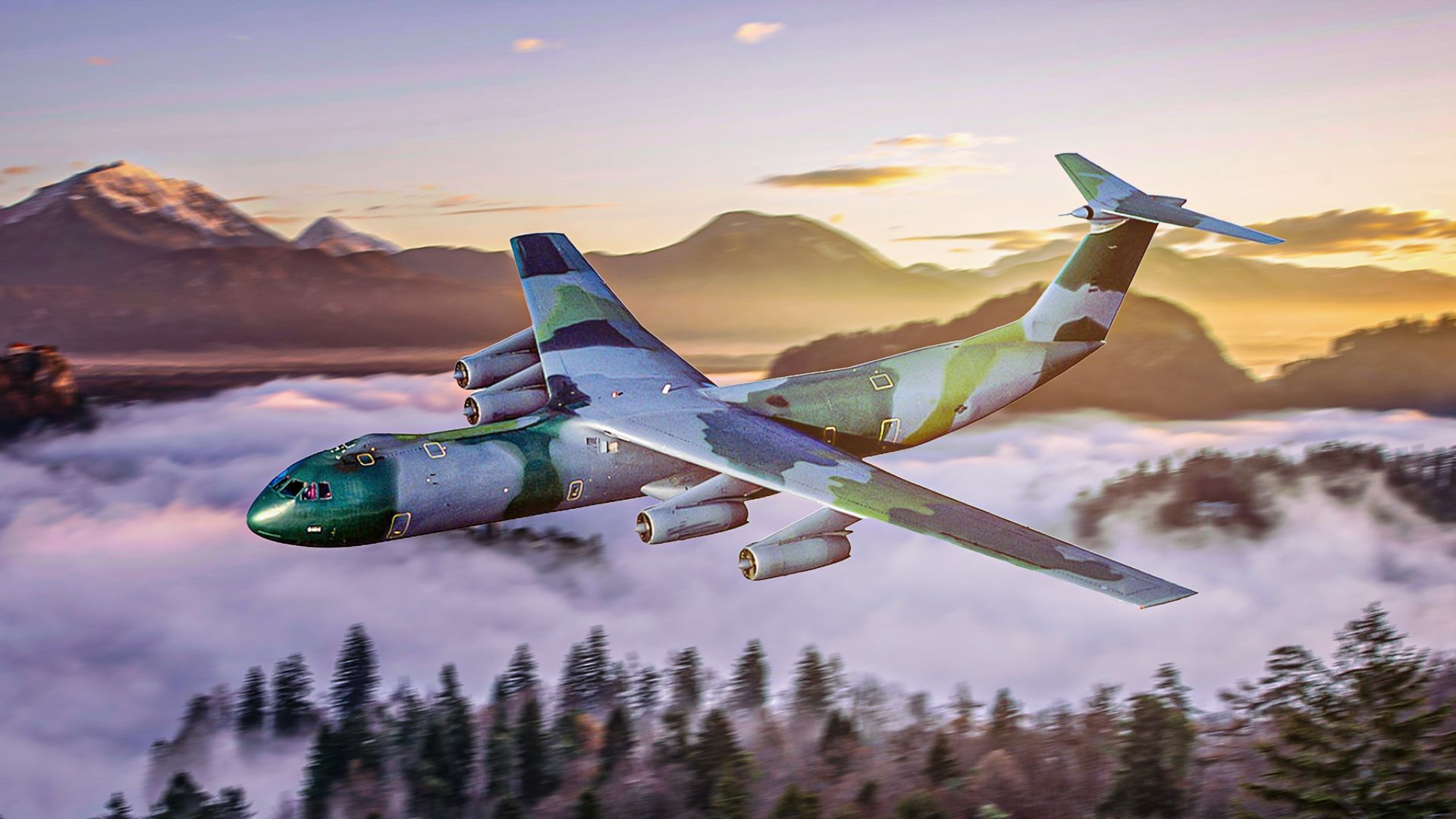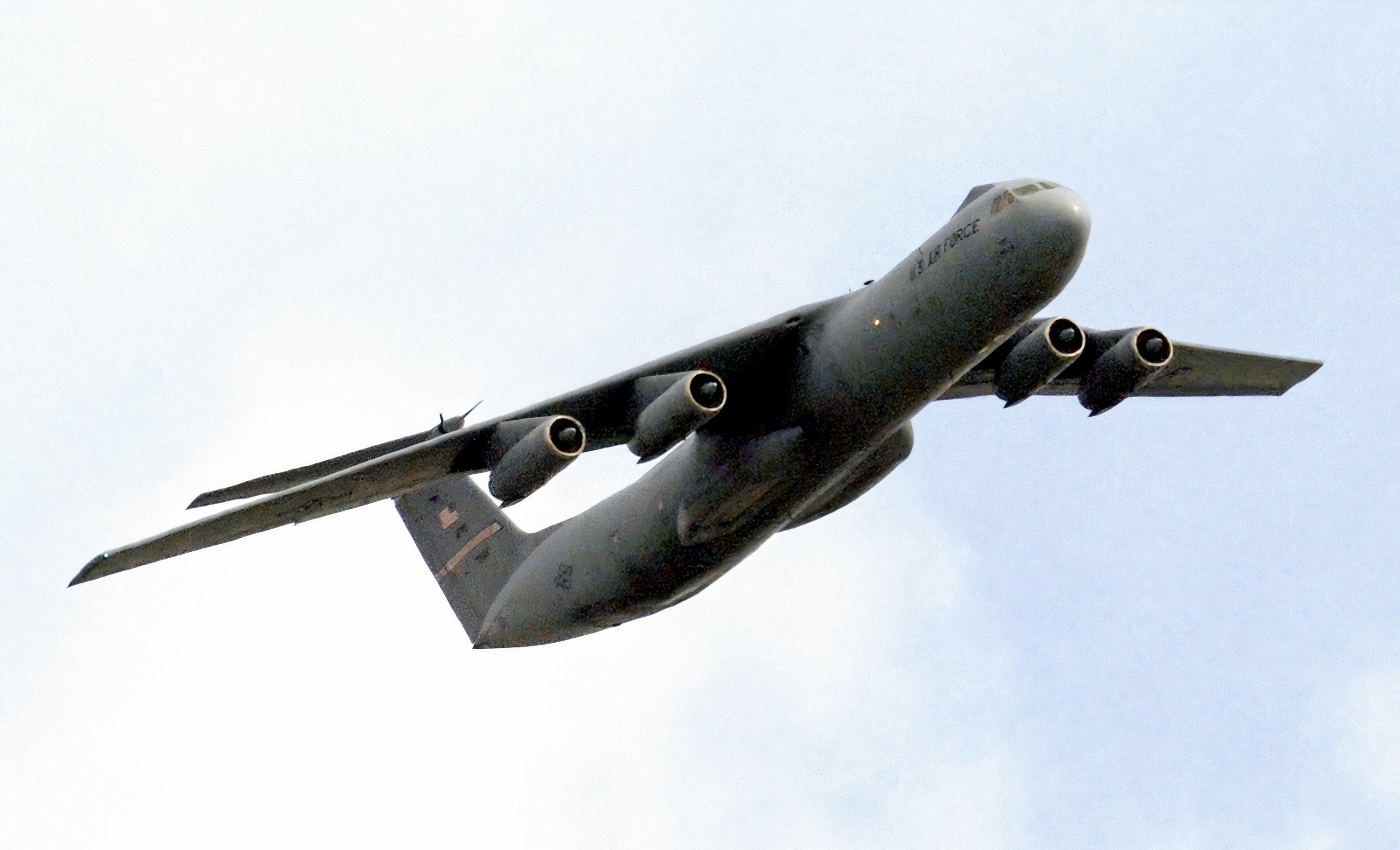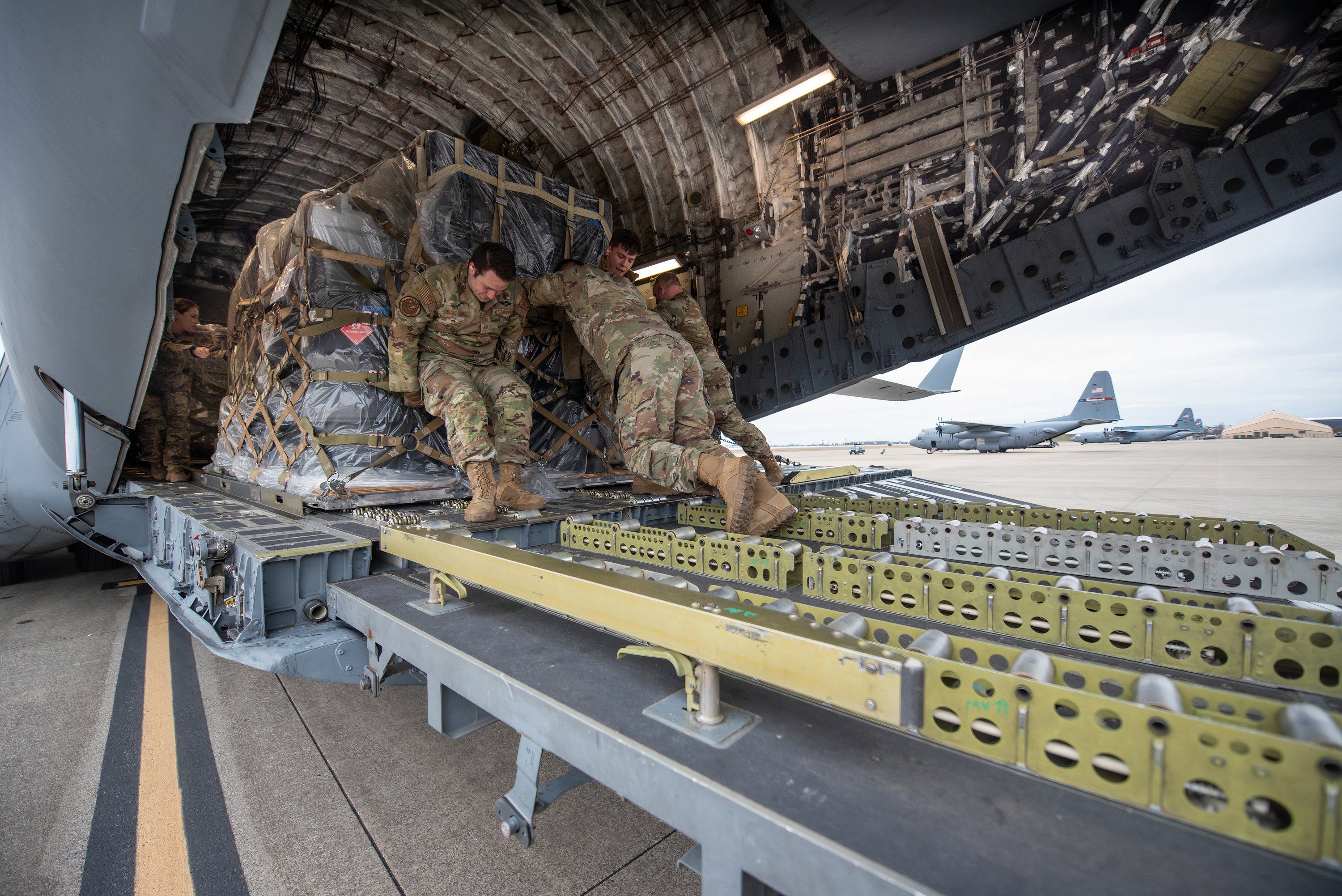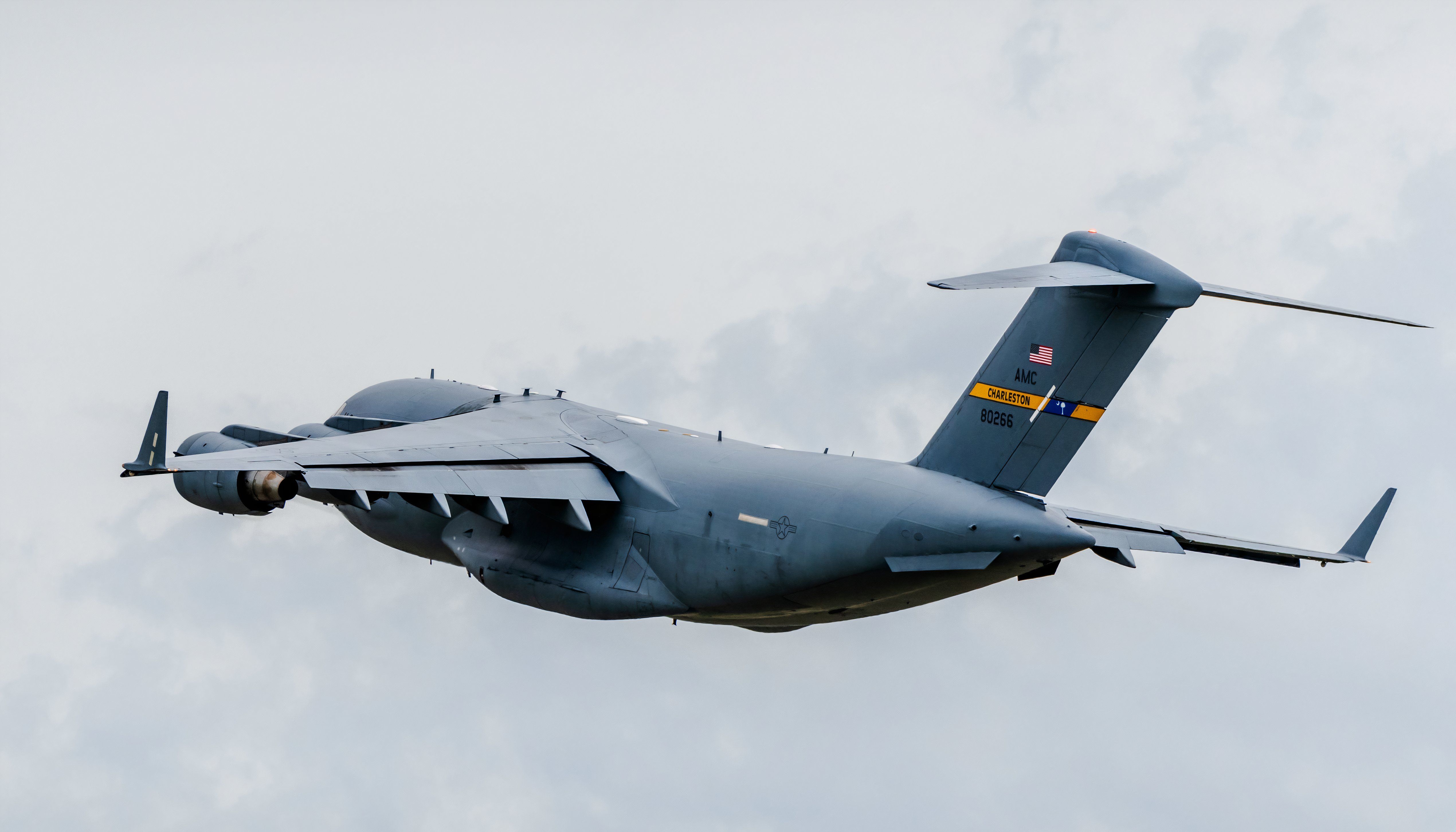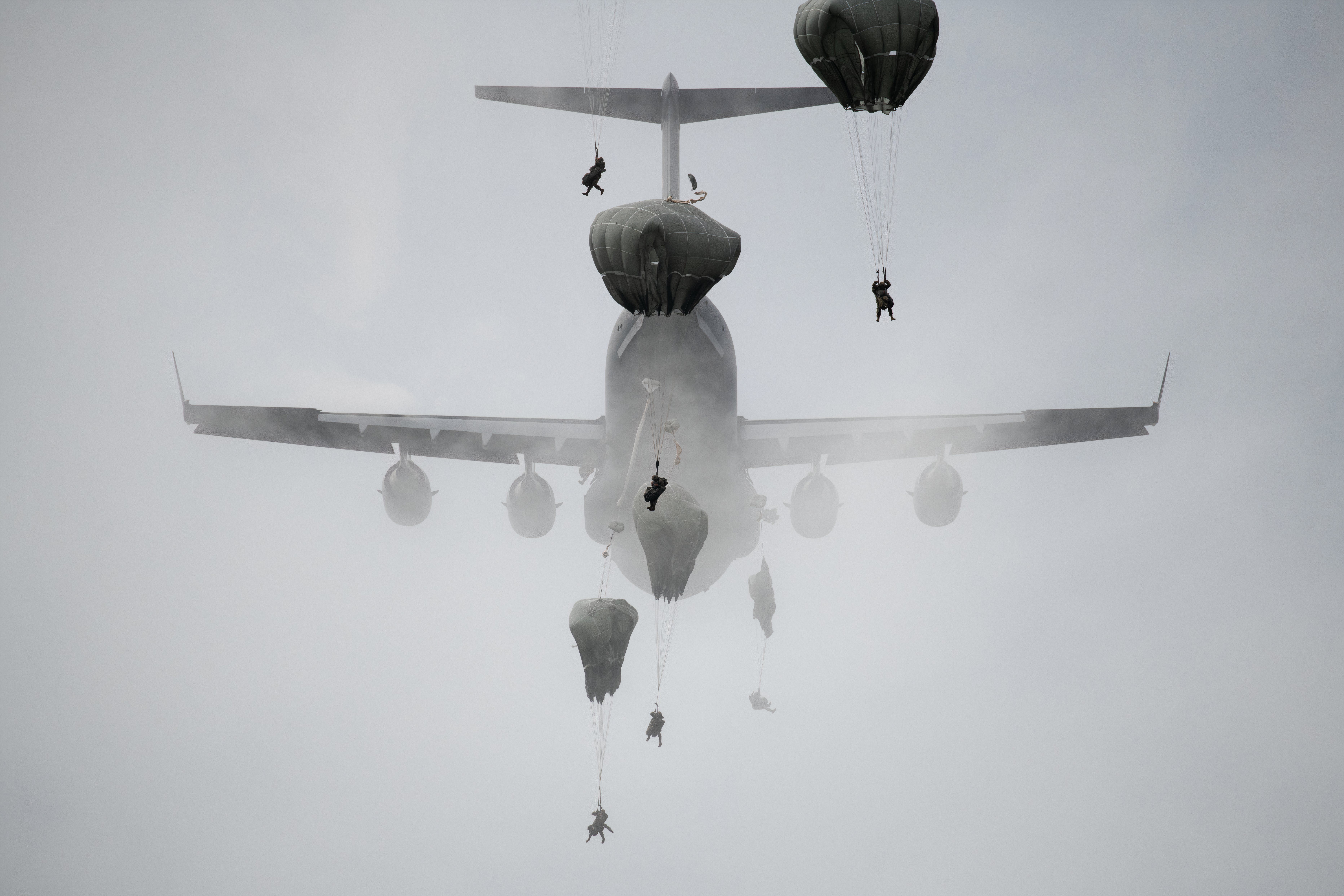Summary
- The Lockheed C-141 Starlifter was replaced by the Boeing C-17 Globemaster III, which was larger and more robust.
- The competition for a medium STOL replacement for Boeing C-130 Hercules was canceled in the 70s.
- Boeing C-17 was made operational in 1997, involved in major operations, and production ended in 2015.
The Lockheed C-141 Starlifter, which had been in service with the United States Air Force (USAF) for nearly 40 years, was retired from service on May 5, 2006. The aircraft that replaced the strategic airlift plane was the Boeing C-17 Globemaster III, a plane designed not only to replace the Lockheed C-141 Starlifter but also to perform some of the tasks assigned to the Lockheed C-5 Galaxy.
In the 1970s, the United States Air Force (USAF) sought a plane to replace its Lockheed C-130 Hercules tactical cargo aircraft. To find a suitable candidate, Boeing invited aircraft manufacturers to submit their designs for a medium short-takeoff and landing (STOL) transport plane.
Boeing submitted its YC-14 twinjet, while McDonnell Douglas proposed its four-engine YC-15. Despite both aircraft exceeding the USAF specifications, the competition was canceled before a winner was announced.
Why did the USAF want to replace the Lockheed C-141 Starlifter?
To understand why the United States Air Force wanted to retire its Lockheed C-141 Starlifter when other older planes were still in service. Despite having many qualities, the Lockheed C-141 Starlifter could not deliver oversized military equipment in theaters, something the USAF discovered during the Vietnam War (1955-1975). The situation was remedied after the introduction of the Lockheed C-5 Galaxy in the summer of 1970.
Photo: USAF
When the Lockheed C-141 Starlifter first entered service with the USAF in April 1965, it was assumed that propellor-driven transports would become obsolete. However, the USAF soon learned that aircraft like the Lockheed C-130 Hercules had capabilities that the Lockheed C-141 Starlifter lacked, such as:
- Short takeoff and landing (STOL)
- Able to operate from limited austere airstrips
- Rugged and reliable
In contrast to the Lockheed C-130 Hercules, the Lockheed C-141 Starlifter was anything but robust and was often grounded due to structural cracks in the wings.
About the Boeing C-17 Globemaster III
In the 1970s, the United States Air Force wanted a jet-powered plane to replace the Lockheed C-130 Hercules tactical cargo aircraft. It also needed an aircraft that could rapidly deploy equipment and troops. After several aircraft manufacturers submitted proposals, the McDonnell Douglas C-17 was selected as the winning aircraft. The swept-wing C-17 was larger than the Lockheed C-141 Starlifter and fitted with more powerful engines.
Photo: USAF
It could perform existing Lockheed C-141 Starlifter jobs and free up the Lockheed C-5 Galaxy to perform more missions carrying oversized cargo.
The USAF placed an order for 210 C-17s, but this was cut to 120 by Secretary of Defense Dick Cheney in April 1990. The C-17 made its maiden flight from the McDonnell Douglas plant in Long Beach, California, on September 15, 1991, a year later than was initially envisaged.
More prototypes were constructed and sent to Edwards Air Force Base in California for flight tests. In October 1992, while undergoing a load test, both wings buckled, which led to a $100 million redesign. In early 1993, the C-17 was given the name “Globemaster III.” Because of delays in production, the Department of Defense (DoD) told McDonnell Douglas that if the issues were not solved, they would terminate the contract after delivering the 40th aircraft.
The C-17 became operational in 1997
By the fall of 1995, the production problems had been solved, and the first United States Air Force Boeing C-17 Globemaster III squadron became operational. In 1997, McDonnell Douglas merged with rival Boeing and two years later told the Department of Defense (DoD) it would cut the price of the aircraft if they ordered a further 60 planes, taking the total number of C-17 orders to 180.
Photo: USAF
Over the next ten years, the USAF increased its demand for the C-17, taking its requirement to 223 aircraft. In 2013, Boeing announced it would stop producing the C-17 once the final aircraft was delivered in 2015. Despite closing its Long Beach plant, Boeing agreed to keep making spare parts for the C-17 until 2017.
Operational history of the Boeing C-17 Globemaster III
The first Boeing C-17 Globemaster III was delivered to the USAF at its base in Charlestown, South Carolina, on July 14, 1993. The 17th Airlift Squadron became operational in January 1995. During the Kosova War (1998-1999), the C-17 was one of the great success stories, flying half of all strategic airlift missions. Its ability to carry large loads and its efficient turnaround times made it an instant favorite with military planners.
The Boeing C-17 Globemaster III saw action again in Afghanistan during Operation Enduring Freedom and Operation Iraqi Freedom in Iraq. On March 26, 2003, 15 C-17 aircraft took part in the largest airborne mission since the invasion of Panama in 1989.
Earlier in the day, 1,000 soldiers of the 173rd Airborne Brigade stationed in Vicenza, Italy, traveled north to Aviano Air Base, where they then flew to Northern Iraq to secure Bashur Airfield. The C-17 was also used to deliver aid and emergency supplies following the 2010 Haiti earthquake.
Photo: USAF
Since 1999, the Boeing C-17 Globemaster III has visited McMurdo Station in Antarctica annually. Each October, C-17s fly round trip between Christchurch Airport (CHC) and the McMurdo Station on the southern tip of Ross Island. From New Zealand, it takes five hours to fly before landing on an ice runway.
The Boeing C-17 Globemaster III is also a support aircraft to transport Marine One, the presidential limousine, and a security detachment.
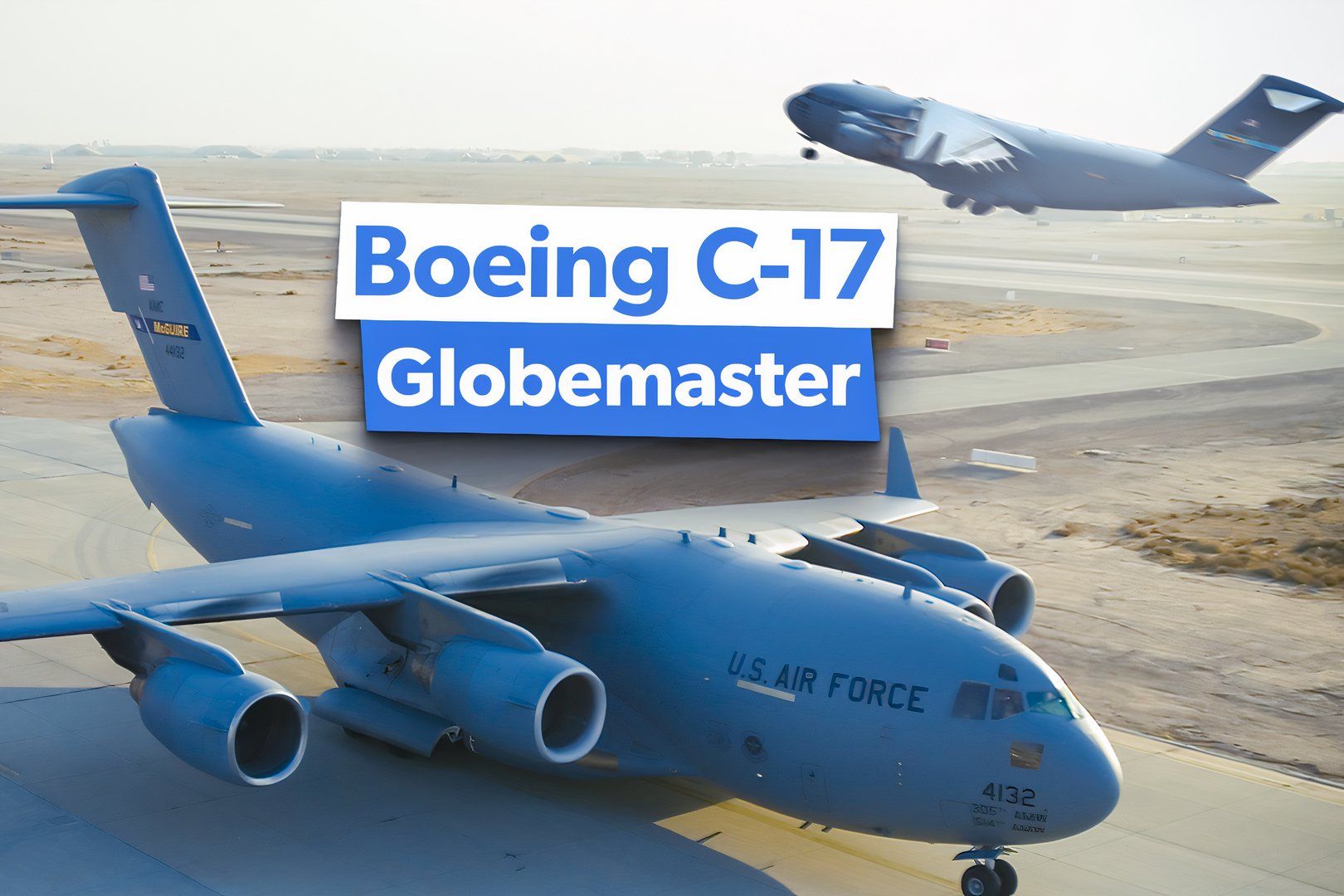
Related
What Is The Boeing C-17 Globemaster III Used For?
It is the ultimate workhorse, capable of carrying personnel, equipment, and even military vehicles.
Specifications and general characteristics of the C-17
|
Crew |
Two pilots and one loadmaster |
|
Capacity |
170,900 lbs |
|
Length |
174 feet |
|
Wingspan |
169 feet 9.6 inches |
|
Height |
55 feet 5 inches |
|
Wing area |
3,800 square feet |
|
Empty weight |
282,500 lbs |
|
MTOW |
585,000 lbs |
|
Fuel capacity |
35,546 US gallons |
|
Power plant |
4 × Pratt & Whitney PW2000 turbofan engines |
Performance
|
Cruising speed |
520 mph |
|
Range |
2,780 miles |
|
Service ceiling |
45,000 feet |
|
Take off and landing distance |
8,200 feet and 3,500 feet |

Related
The History Of The Boeing C-17 Globemaster III Over The Years
A look at how the massive military airlift plane came to be.

